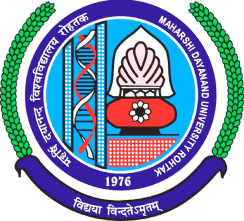
MBA in Risk Management from Subharti University: Admission Process, Eligibility Criteria, Highlights, Syllabus, Scope, FAQ.
MBA in Risk Management Overview-Subharti University:
- Core Business Courses: The program typically includes core business courses such as finance, marketing, operations, and strategy. These courses provide a foundation of business knowledge that is essential for effective risk management.
- Risk Management Courses: The program will have specialized courses that specifically address risk management concepts, techniques, and strategies. Topics covered may include risk identification, risk assessment, risk mitigation, risk communication, and risk governance.
- Financial Risk Management: This area focuses on understanding and managing financial risks, including market risk, credit risk, liquidity risk, and operational risk in financial institutions. Students may learn about financial instruments, risk modeling techniques, and regulatory frameworks.
- Operational Risk Management: This area deals with identifying and managing risks related to an organization’s internal processes, systems, and people. Students may study topics such as supply chain risks, project management risks, technology risks, and business continuity planning.
- Enterprise Risk Management: This field focuses on a holistic approach to risk management across an entire organization. It involves integrating risk management practices into the organization’s overall strategy and decision-making processes.
- Risk Analysis and Modeling: This area involves quantitative analysis and modeling techniques to assess and measure risks. Students may learn statistical methods, probability theory, and risk modeling tools to analyze and quantify risks in different business contexts.
- Legal and Regulatory Frameworks: Students may explore the legal and regulatory aspects of risk management, including compliance requirements, corporate governance, and risk management standards.
- Case Studies and Practical Applications: Many programs incorporate real-world case studies, simulations, and practical projects to provide students with hands-on experience in identifying and managing risks.
MBA in Risk Management Eligibility-Subharti University:
- Educational Background: Applicants should typically have a bachelor’s degree in any discipline from a recognized university or educational institution. The degree should be completed with a minimum aggregate score, which may vary depending on the university and program.
- Work Experience: Some universities may prefer or require applicants to have relevant work experience, especially for executive or part-time MBA programs. However, this requirement may not be applicable to all universities or programs, particularly for regular full-time MBA programs.
- Entrance Exams: Many universities require applicants to take specific entrance exams as part of the admission process. Common entrance exams for MBA programs in India include the Common Admission Test (CAT), Management Aptitude Test (MAT), Xavier Aptitude Test (XAT), and Common Management Admission Test (CMAT). It is important to check with Subharti University to determine if they have any specific entrance exam requirements.
- English Language Proficiency: As MBA programs are often taught in English, applicants whose native language is not English may need to demonstrate English language proficiency. This can be done through standardized tests such as the TOEFL (Test of English as a Foreign Language) or IELTS (International English Language Testing System).
- Other Requirements: Subharti University may have additional requirements such as personal interviews, group discussions, or statement of purpose (SOP) as part of the admission process. It’s important to refer to the university’s official website or contact their admissions office for specific details.
Why to do MBA in Risk Management from Subharti University?
- Reputation and Accreditation: Research the reputation and accreditation of Subharti University and its MBA program. Look for accreditations from recognized bodies as they ensure that the program meets certain quality standards.
- Curriculum and Specialization: Examine the curriculum of the MBA in Risk Management program at Subharti University. Evaluate the range and depth of courses offered, ensuring they cover the relevant topics and skills needed for a career in risk management.
- Faculty and Expertise: Consider the qualifications, expertise, and industry experience of the faculty members in the Risk Management program. Experienced faculty can provide valuable insights and guidance throughout your studies.
- Industry Connections and Internships: Investigate whether Subharti University has strong ties with the industry and offers opportunities for internships or practical experience. These connections can enhance your learning and provide networking opportunities.
- Alumni Network: Look into the size and engagement of the university’s alumni network, particularly in the field of risk management. A strong alumni network can provide valuable connections and potential career opportunities.
- Career Services and Placement Support: Evaluate the career services and placement support provided by the university. Check if they offer career counseling, workshops, job fairs, and connections to industry professionals to assist you in your job search.
- Research Opportunities: If you are interested in research or further academic pursuits, explore if Subharti University offers research opportunities or has collaborations with other institutions in the field of risk management.
- Cost and Financial Aid: Consider the affordability of the program and explore the availability of scholarships, grants, or other forms of financial aid that can help reduce the financial burden.
- Location and Network: Consider the location of Subharti University and its proximity to relevant industry hubs or job markets. Additionally, assess the university’s alumni and industry network in the area, as it can facilitate networking and career advancement.
- Reviews and Feedback: Seek feedback from current or former students of Subharti University, if possible. Their experiences and opinions can provide valuable insights into the program’s strengths and weaknesses.
Highlights MBA in Risk Management from Subharti University:
|
Highlights |
Description |
|
Program Name |
MBA in Risk Management |
|
University |
Subharti University |
|
Accreditation |
Recognized accreditation from relevant educational bodies |
|
Specialization |
Focuses on risk management concepts and strategies |
|
Curriculum |
Comprehensive courses covering various aspects of risk management |
|
Faculty |
Experienced faculty members with expertise in risk management |
|
Industry Connections |
Strong ties with industry, providing networking and internship opportunities |
|
Alumni Network |
Extensive alumni network in the field of risk management |
|
Research Opportunities |
Opportunities for research and collaboration in risk management |
|
Career Services |
Dedicated career services offering counseling, job fairs, and placement support |
|
Location |
Convenient location with proximity to industry hubs and job markets |
|
Financial Aid |
Availability of scholarships, grants, and financial assistance options |
|
Feedback |
Positive reviews and feedback from current and former students |
Admission Process: MBA in Risk Management from Subharti University:
- Application: Begin by completing the application form for the MBA in Risk Management program. This form is usually available on the university’s website or can be obtained from the admissions office.
- Eligibility: Ensure that you meet the eligibility criteria set by Subharti University for the MBA in Risk Management program. This usually includes possessing a bachelor’s degree from a recognized institution, meeting minimum academic requirements, and any specific requirements such as work experience or entrance exams.
- Entrance Exam: Some universities require applicants to take specific entrance exams as part of the admission process. Research if Subharti University requires an entrance exam and prepare accordingly. Common entrance exams for MBA programs in India include CAT, MAT, XAT, and CMAT. Check the SubhartiUniversity website or contact the admissions office to determine if they have any specific entrance exam requirements.
- Selection Criteria: Subharti University will evaluate your application based on various criteria such as academic performance, entrance exam scores (if applicable), work experience (if required), statement of purpose, letters of recommendation, and any other specified criteria.
- Personal Interview: Shortlisted candidates may be called for a personal interview. This interview allows the university to assess your communication skills, motivation, and suitability for the MBA in Risk Management program. Prepare for the interview by researching common interview questions and practicing your responses.
- Document Verification: If selected, you will be required to submit relevant documents such as academic transcripts, entrance exam scores, identification proof, and any other documents specified by Subharti University. Ensure that you have all the necessary documents ready for submission.
- Admission Offer: If your application is successful and you meet all the requirements, you will receive an admission offer from Subharti University. The offer will include details such as the program start date, fees, and any other relevant information.
- Acceptance and Enrollment: After receiving the admission offer, you will need to accept the offer by paying the required fees within the specified deadline. This will secure your place in the MBA in Risk Management program at Subharti University.
Syllabus for MBA in Risk Management from Subharti University:
- Core Management Courses:
- Organizational Behavior
- Financial Management
- Marketing Management
- Operations Management
- Strategic Management
- Managerial Economics
- Business Ethics and Corporate Governance
- Risk Management Courses:
- Introduction to Risk Management
- Principles of Risk Assessment and Analysis
- Financial Risk Management
- Operational Risk Management
- Strategic Risk Management
- Enterprise Risk Management
- Legal and Regulatory Frameworks in Risk Management
- Quantitative Methods for Risk Analysis:
- Statistical Methods for Risk Analysis
- Probability Theory and Applications
- Decision Analysis and Modeling
- Risk Modeling and Simulation
- Data Analytics for Risk Management
- Insurance and Risk Financing:
- Principles of Insurance
- Risk Transfer and Risk Financing Techniques
- Insurance and Reinsurance Operations
- Claims Management and Loss Control
- Cyber Risk and Information Security:
- Cyber Risk Management
- Information Security Governance
- Cyber Threats and Incident Response
- Data Privacy and Compliance
- Business Continuity and Disaster Recovery:
- Business Continuity Planning
- Disaster Recovery Management
- Crisis Management
- Emergency Response and Preparedness
- Case Studies and Practical Applications:
- Analysis of Real-World Risk Management Scenarios
- Risk Management in Specific Industries
- Risk Management Tools and Techniques
Scope after MBA in Risk Management from Subharti University:
- Risk Manager: As a risk manager, you would be responsible for identifying, assessing, and managing risks within an organization. This role involves developing risk management strategies, implementing risk mitigation measures, and ensuring compliance with regulatory requirements.
- Risk Analyst: Risk analysts analyze data, conduct risk assessments, and generate reports to help organizations understand potential risks. They use statistical models and risk assessment tools to quantify risks and provide recommendations for risk mitigation.
- Compliance Officer: Compliance officers ensure that organizations adhere to relevant laws, regulations, and industry standards. They assess risks related to compliance and develop and implement compliance programs to minimize legal and regulatory risks.
- Insurance Risk Manager: In this role, you would work for insurance companies, assessing and managing risks associated with insurance policies. You would analyze policy terms, evaluate potential risks, and determine appropriate premiums and coverage.
- Financial Risk Analyst: Financial risk analysts focus on evaluating and managing financial risks, such as market risk, credit risk, liquidity risk, and operational risk. They analyze financial data, develop risk models, and provide recommendations to optimize risk-return trade-offs.
- Business Continuity Manager: Business continuity managers develop and implement strategies to ensure the continuity of business operations during crises or disasters. They identify potential risks to business continuity, develop response plans, and coordinate recovery efforts.
- Risk Consultant: Risk consultants work with organizations on a project basis, providing expertise in risk management. They assess risks, develop risk management frameworks, and provide recommendations to improve risk management practices.
- Risk Assurance Manager: Risk assurance managers assess and provide assurance on the effectiveness of an organization’s risk management processes. They conduct internal audits, evaluate control systems, and recommend improvements to mitigate risks.
- Risk and Compliance Analyst: Risk and compliance analysts assist in the identification, assessment, and management of risks related to compliance with legal and regulatory requirements. They ensure that organizations operate within established frameworks and guidelines.
- Risk Management Consultant: Risk management consultants provide advisory services to organizations on risk management strategies, policies, and frameworks. They help develop risk management systems, conduct risk assessments, and implement risk management best practices.
FAQ for MBA in Risk Management from Subharti University:
- What is the duration of the MBA in Risk Management program at Subharti University?
- The duration of the program can vary, but it is typically two years for a full-time MBA program.
- What is the eligibility criteria for the MBA in Risk Management program?
- The eligibility criteria may include having a bachelor’s degree from a recognized institution with a minimum aggregate score. Additional requirements such as work experience or entrance exams may also apply. It’s best to refer to the official Subharti University website or contact their admissions office for specific eligibility details.
- Are there any specific entrance exams required for admission to the MBA in Risk Management program?
- Subharti University may have specific entrance exam requirements for the MBA program. It is advisable to check the university’s website or contact the admissions office to determine if they require any particular entrance exams.
- Can I pursue the MBA in Risk Management program on a part-time or distance learning basis?
- Subharti University may offer part-time or distance learning options for the MBA program. It is recommended to check with the university regarding the availability of such options.
- What is the curriculum structure of the MBA in Risk Management program?
- The curriculum structure can vary, but it typically includes core management courses, specialized risk management courses, quantitative methods for risk analysis, insurance and risk financing, and other relevant subjects. For specific details, it is best to refer to the official Subharti University website or contact their admissions office.
- Are there opportunities for internships or practical experience in risk management?
- Subharti University may provide opportunities for internships or practical experience in risk management. It is advisable to inquire about the university’s industry connections and internship programs.
- What are the career prospects after completing an MBA in Risk Management from Subharti University?
- After completing the program, graduates can pursue careers as risk managers, risk analysts, compliance officers, financial risk analysts, insurance risk managers, and other related roles in various industries. The specific career prospects may depend on individual skills, experience, and industry demand.
- Does Subharti University provide placement assistance for MBA in Risk Management graduates?
- Subharti University may have a dedicated career services department that provides placement assistance, career counseling, and facilitates interactions with industry professionals. It is recommended to check with the university for more information on their placement support.
- Are there any research opportunities available in the field of risk management?
- Subharti University may offer research opportunities in the field of risk management. Research projects, collaborations, or seminars/workshops may be available for students interested in pursuing research in the field.
- What is the fee structure for the MBA in Risk Management program at Subharti University?
- The fee structure can vary, and it is advisable to refer to the official Subharti University website or contact their admissions office for detailed information regarding the fee structure.

















